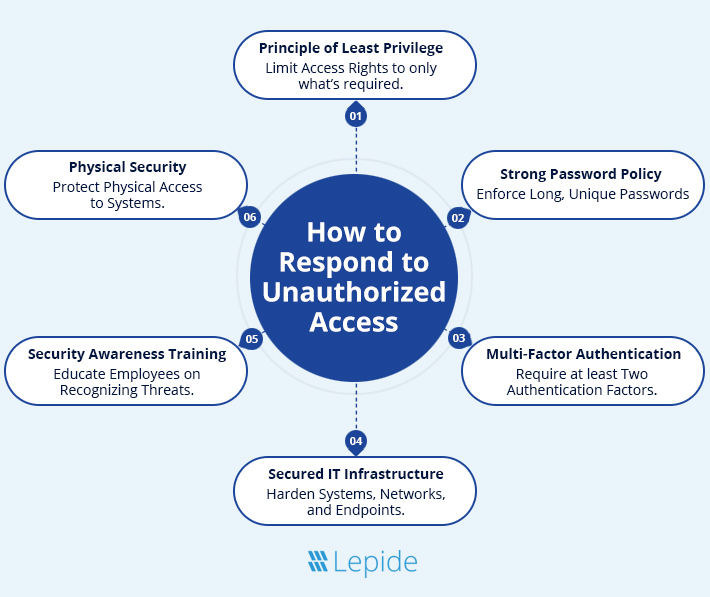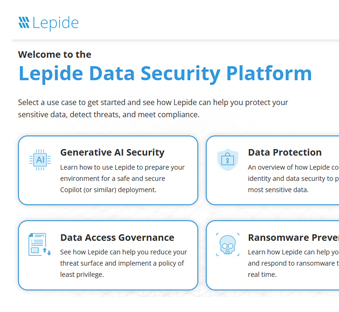
Unauthorized access poses serious risk to companies of all sizes, often leading to data breaches, monetary loss, reputational harm, or legal action. Developing a strong cybersecurity strategy and putting best practices into operation are essential for efficiently detecting and responding to unwanted access.
What is Unauthorized Access?
The phrase “unauthorized access” defines any individual who gains access to an organization’s data, networks, endpoints, applications, or devices without permission. To access systems they are only meant for authorized users involves bypassing security controls or leveraging vulnerabilities in IT systems. Malicious actors often utilize it to steal data, embed malicious code, and take advantage of violations of all types. It can have severe consequences for a company and its customers.
Inadequate or misconfigured authentication systems frequently serve as a means for unauthorized access. In addition to using weak passwords or the same password across services, other reasons for unauthorized access include insider threats, compromised accounts (hackers look for a weak system and use it to get into other secure systems), social engineering attacks (like phishing), and more.
How to Detect Unauthorized Access?
The quicker unauthorized access is discovered, the more effectively the incident may be investigated. The process of identifying and reacting to efforts by unauthorized parties or individuals to obtain access to a system, network, or data is known as detection of unauthorized access. The goal of this important aspect of cybersecurity and information security is to help prevent unauthorized individuals from accessing sensitive information and resources. Network traffic can be monitored for threats, suspicious activities, and known threats using Intrusion Detection Systems (IDS), which are mostly utilized in the government, healthcare, and financial industries.
Another method for identifying unauthorized access is the Intrusion Prevention System (IPS), which not only recognizes attempted intrusions but also takes preventative action by blocking them directly. Ensuring that only authorized users have access to resources requires the implementation of robust access control mechanisms. To minimize possible harm, guarantee regulatory compliance, and preserve the availability, confidentiality, and integrity of data and information systems, the fundamental objective of detecting unauthorized access is to quickly detect and address unauthorized attempts.
How to Respond to Unauthorized Access?
Implementing best practices to respond to unauthorized access involves a combination of proactive measures and responsive actions. Below is a list of best practices:

- Implement the Principle of Least Privilege (PoLP): The Principle of Least Privilege (PoLP) is a general cybersecurity principle that seeks to reduce unwanted access by making sure users, applications, and systems only have the access rights they need to execute their particular functions. By restricting rights to access, PoLP minimizes the attack surface area and reduces the threat of both external attacks and insider threats.Applying PoLP complies with numerous data protection laws by making sure that access to confidential data is duly restricted and monitored. The PoLP method seeks to frequently audit internal user access rights to grant the lowest-necessary level of access to data, system, networks, and devices for the individual to execute the principal responsibilities of the job.
- Strong Password Policy: One of the best ways to prevent unauthorized access is to use secure passwords.This means that in order to create and maintain a strong password policy, all network users must follow established best practices for setting and changing strong passwords on a regular basis and ensuring that credentials are not shared between devices, apps, or other accounts. The right policy will support the use of strong passwords and guarantee that they are unique, difficult, and long enough. The organization’s password policy has to specify who or what is in charge of generating and maintaining user passwords. By following a well established policy the organization will improve its overall password security and reduce the likelihood of unauthorized access.
- Multi-Factor Authentication: One significant way of avoiding unauthorized access to passwords is through multi-factor authentication. A single compromised account or group of user credentials is used to acquire unauthorized access. To avoid unwanted access attempts, multi-factor authentication should be implemented. It will prevent unwanted actors from proceeding further if an additional identity confirmation step must be completed, such as sending a one-time passcode to a user’s phone.
- Securing IT Infrastructure: IT infrastructure vulnerability scanning and penetration testing must be performed on a regular basis by the organization. Failure to update security systems on schedule is among the most frequent security threats. The monitoring software must be utilized with a strong firewall in place to enhance safety from unauthorized access. Although monitoring utilities are capable of detecting insider threats immediately, a firewall can serve as a protective barrier against unauthorized access to databases, web applications, networks, and critical systems.
- Security Awareness Training: Moving away from an IT-centric cybersecurity approach and making employees your first line of defense are both essential because attackers usually target people rather than computers. Regularly educating employees about the newest cybersecurity dangers and security best practices, such as how to spot suspicious activity, is one way to achieve this
- Remember Physical Security: Despite all of that, physical security in your company remains essential, although most remote unauthorized access is virtual, the individual accessing information or computer networks using their own system is doing so using compromised credentials. Whether the intruder is an outsider breaching your company or a hostile insider gaining access, illegal entry is easily made by failing to lock down devices or leaving them publicly exposed while they still hold credentials.
How Lepide Helps
The Lepide Data Security Platform provides immediate visibility into permission changes and identifies users with excessive rights so that a least privilege policy can be put into place. Lepide also enables companies to implement policies that automate removing excessive permissions, enabling fast and simple implementation of zero trust.
Don’t let unauthorized access compromise your business. Download a free trial or arrange a demo with one of our engineers.

